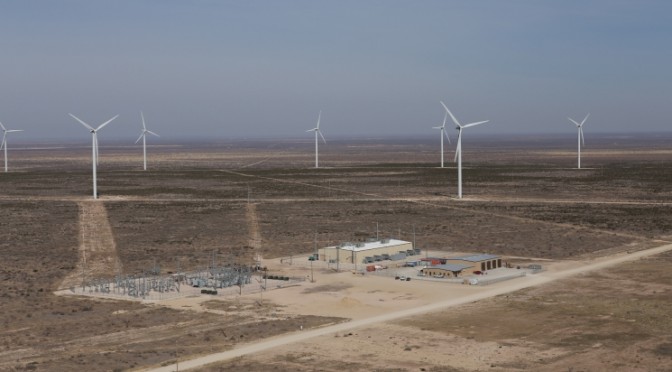In the shadow of oil fields and giant drums of petrochemical plants, Houston, the fourth-largest city in the United States, is flush with parks, hike and bike trails, and government efforts to reduce the carbon footprint and think green.
“The city of Houston is the number one municipal purchaser of green power and the seventh largest overall purchaser in the nation,” said Mayor Annise Parker in an emailed response to questions from Xinhua.
“Thirty-three percent of the city’s energy comes from wind farms in West Texas, and the city will increase that percentage to 50 percent by the summer of 2013,” she added.
Over the next nine years, Houston will be implementing the voter-approved Bayou Greenways Initiative to add 4,000 acres (16.19 square km) of new and equitably distributed green spaces that can also serve the functions of flood control and stormwater quality enhancement, Parker said.
“It will also complete 300 miles (482 km) of continuous all-weather hike and bike trails that will meander through those greenways,” she said. “Developing green corridors along the bayous with connected trails bring a smart and sustainable resolution to alleviate the city’s green space and flooding challenges.”
Houston’s efforts to convert its communities to renewable energy, recycling and culture of conservation has not gone unnoticed, with one city office — the Code Enforcement Green Building Center (CEGBC) — attracting visitors from all over the world.
From its vegetated rooftop garden to a recyclable rainwater collection system, the museum-like four-story building is itself a study in energy conservation and environmental friendliness.
For the 20 or so individuals, tours, schools, businesses or nonprofits coming to the permitting center headquarters every day to get approval to develop and build within the city, the center provides a first-hand and interactive look at the materials and structural strategies to build, remodel or renovate with green solutions.
The center offers a showroom and classroom that contain samples of recycled or refurbished materials in more than 50 displays. It also includes a library of information and free samples of green materials that create a less-costly and healthier living environment, said the center’s executive director, Steve Stelzer, in an exclusive interview with Xinhua.
“We have a lot of alternative building materials, insulation and water-conserving displays, recycled content materials, energy control devices and recovery displays,” Stelzer said. “The whole idea is to have things people can touch and feel.”
Parker said the city is exploring ideas about implementing the program of Property Assessed Clean Energy, which will provide financing to help property owners break down the financial barriers to install renewable energy projects.
“One of the city’s most successful environmental outreach programs is the Houston Green Office Challenge (GOC),” Parker said. “The city launched the program to provide training and resources to help office building owners, property managers, management districts and tenants increase their environmental and economic performance in cleaner transportation choices, energy conservation, property management, tenant engagement, water efficiency and waste reduction.”
“In the first year of the program, the GOC program had 400 participants who collectively reduced energy usage by 28 million kwh, reduced water usage by 74 million gallons (280,000 tons),” Parker said.
In 2011, Parker and the GOC program were selected as the nation’s top winner in the 2011 Mayors’ Climate Protection Awards, sponsored by the U.S. Conference of Mayors, a program that recognizes mayors for innovative practices in their cities that increase energy efficiency and reduce greenhouse gas emissions.
“Other cities could implement (the GOC program) because it is adaptable to any cities’ needs,” Parker said.
At various computerized work stations throughout the CEGBC, the public can navigate the web to see the center’s green building adviser. Like everything at the center, computer access is free to the public. The display showroom has building component, water conservation, site and energy efficiency sections.
One of the most popular features at the center is the demonstration vegetated roof.
“We irrigate it from air-conditioning condensate,” Stelzer said. “We grow a combination of a Mexican sedum and native grasses and wild flowers. The roof does three things: It helps to retain the rain water, keeps the roof cooler, and, the best thing about it, the roof keeps out ultraviolet rays.”
Such a roof does require a greater cost in materials, but while traditional, lower-cost roofs will have to be repaired and in most cases replaced in 15 to 20 years, “we won’t be doing that,” he said.
The center is the third largest in the nation right behind the largest in Chicago and then Boston.
Despite Houston’s efforts to educate the public about the advantages of ecologically friendly building practices, Stelzer said the public suffers from an alarming lack of education about the subject.
“There is an astounding lack of education about basic concepts,” he said. “People really don’t understand insulation very well and I think these things can be taught in middle schools and high schools so people have a better sense of how their homes operate. I want to try and help with that, so I am reaching out to the schools.”
City programs or projects the mayor recommends for adaption in other large cities throughout the world include an energy reduction program in city municipal buildings.
“A total of 297 city facilities are expected to achieve guaranteed energy use reductions of 30 percent saving over 22 million kwh of electricity every year, with paybacks of, on average, less than 10 years,” Parker said.
Other Houston green programs include the month-old expansion of the Houston Bike Share to encourage biking in Houston. Parker said biking will encourage health and environmental change, as part of the community’s transportation network.
Betty L. Martin, http://news.xinhuanet.com/


